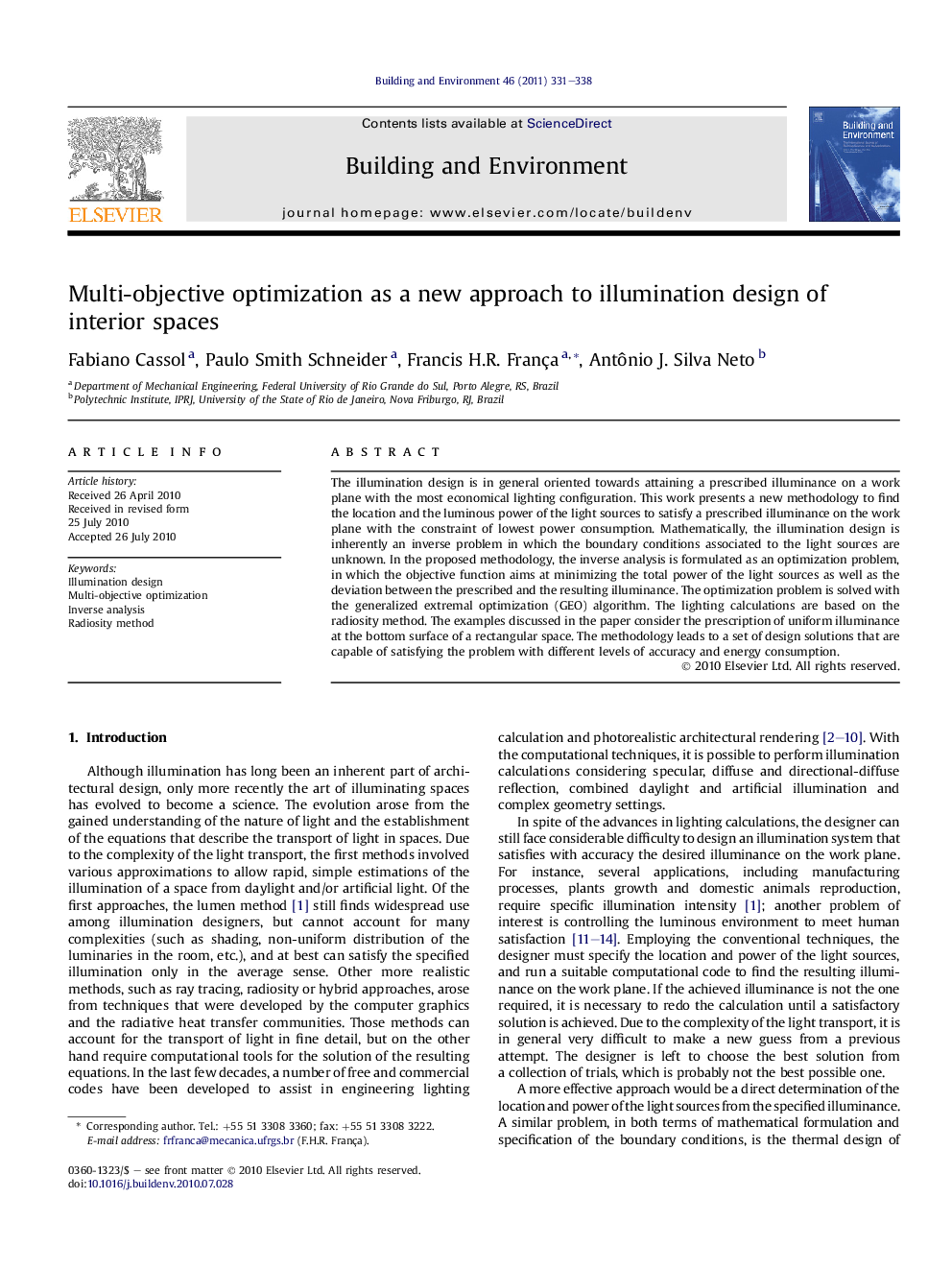| Article ID | Journal | Published Year | Pages | File Type |
|---|---|---|---|---|
| 248762 | Building and Environment | 2011 | 8 Pages |
The illumination design is in general oriented towards attaining a prescribed illuminance on a work plane with the most economical lighting configuration. This work presents a new methodology to find the location and the luminous power of the light sources to satisfy a prescribed illuminance on the work plane with the constraint of lowest power consumption. Mathematically, the illumination design is inherently an inverse problem in which the boundary conditions associated to the light sources are unknown. In the proposed methodology, the inverse analysis is formulated as an optimization problem, in which the objective function aims at minimizing the total power of the light sources as well as the deviation between the prescribed and the resulting illuminance. The optimization problem is solved with the generalized extremal optimization (GEO) algorithm. The lighting calculations are based on the radiosity method. The examples discussed in the paper consider the prescription of uniform illuminance at the bottom surface of a rectangular space. The methodology leads to a set of design solutions that are capable of satisfying the problem with different levels of accuracy and energy consumption.
